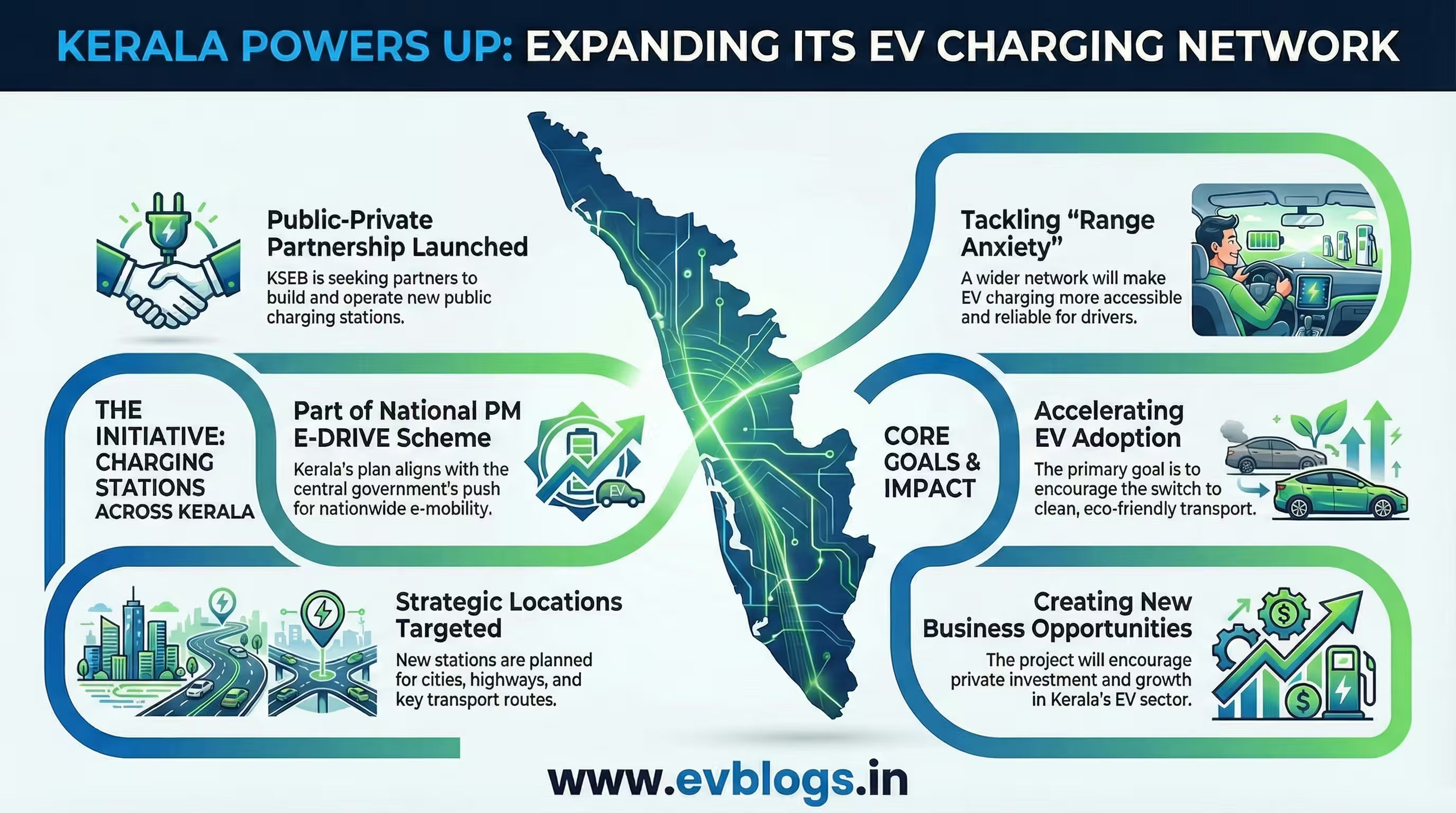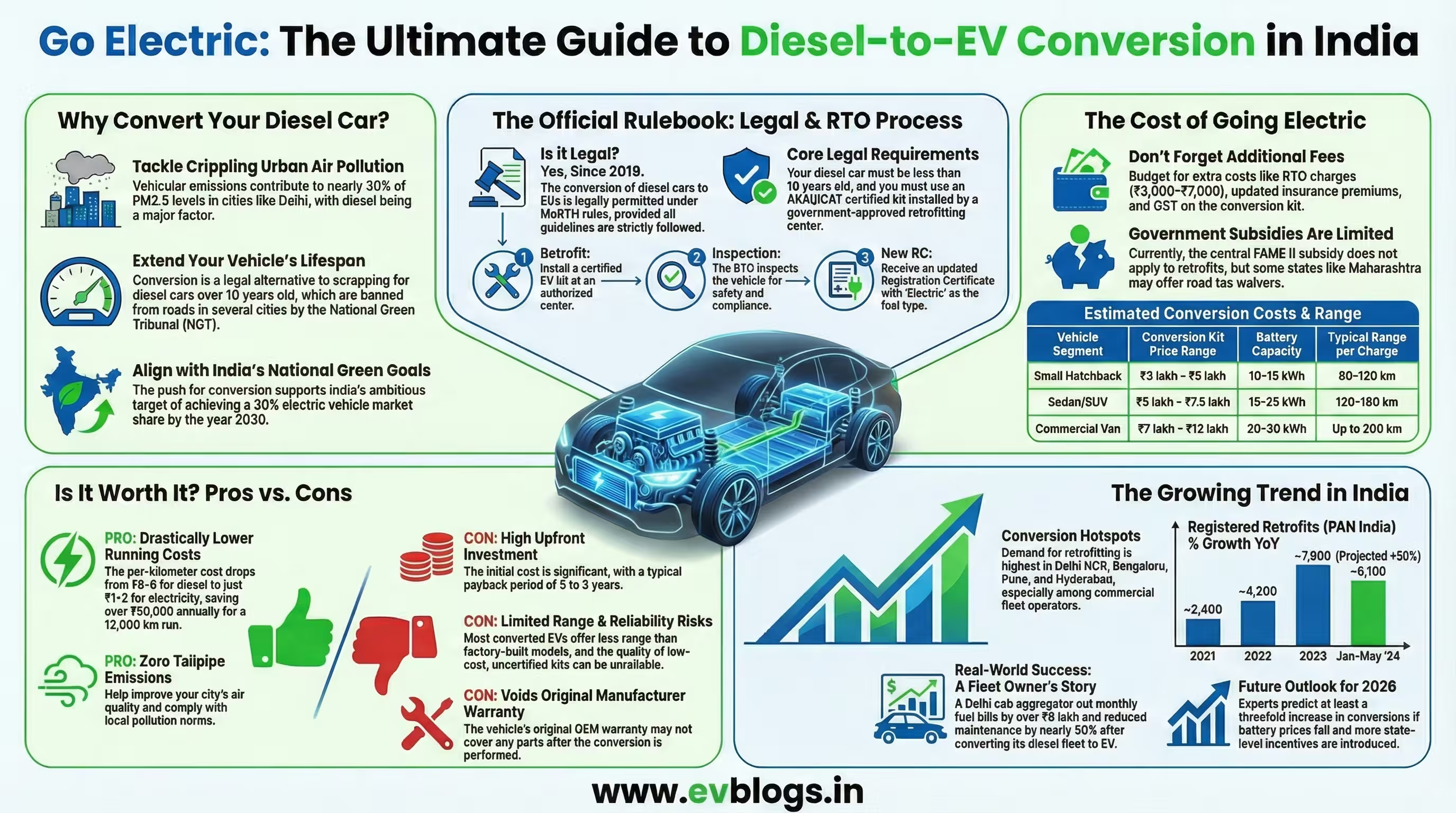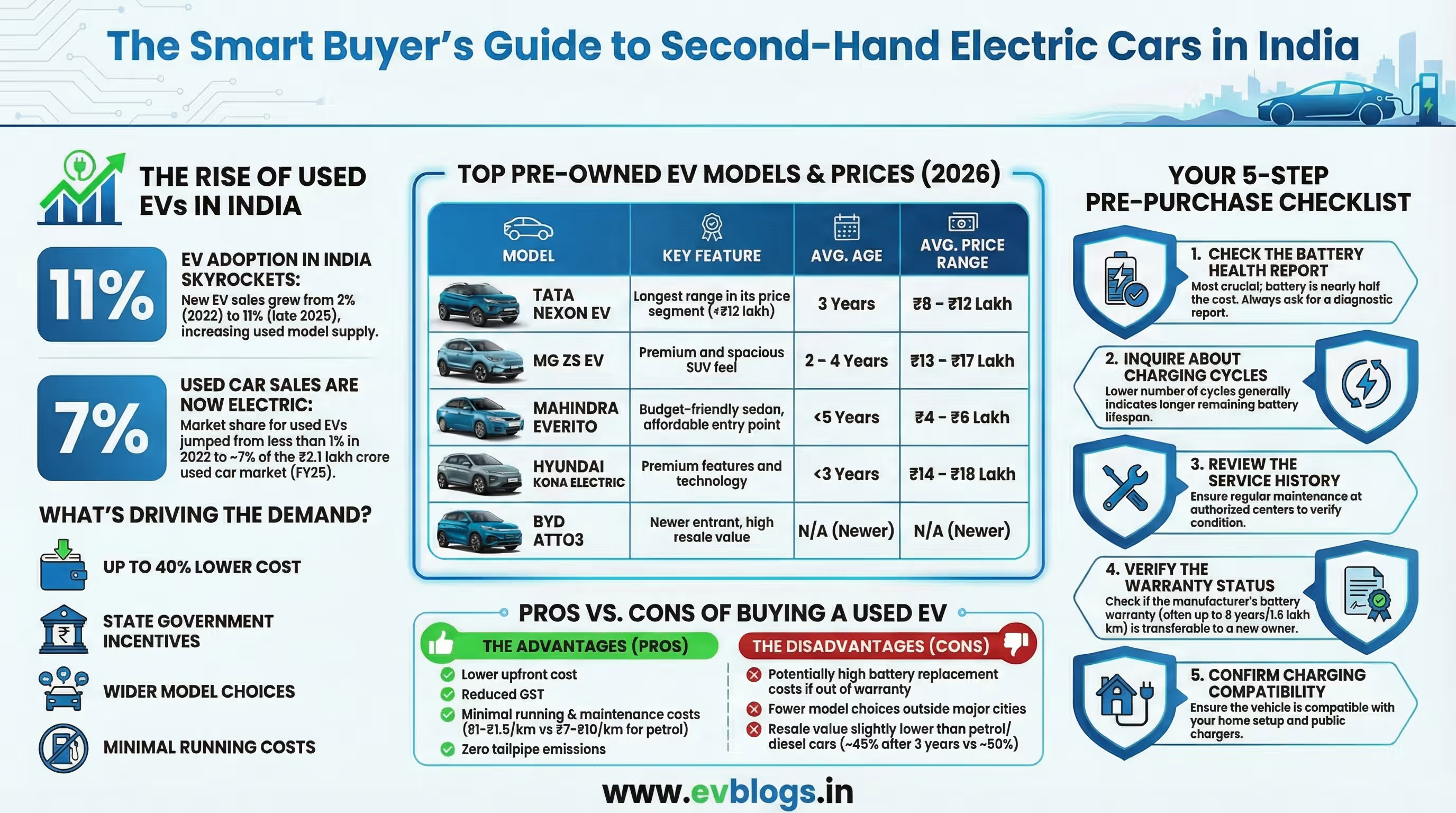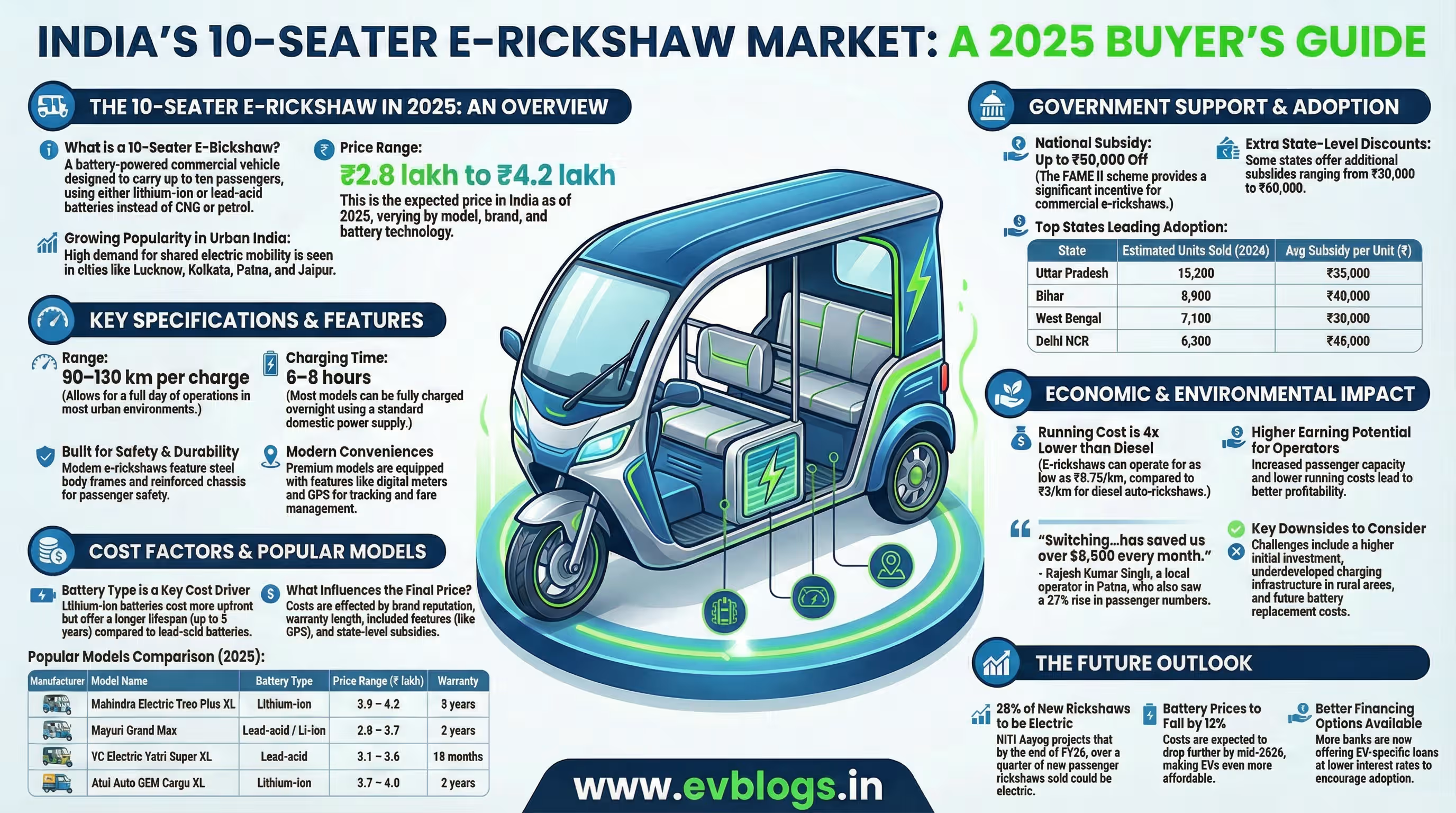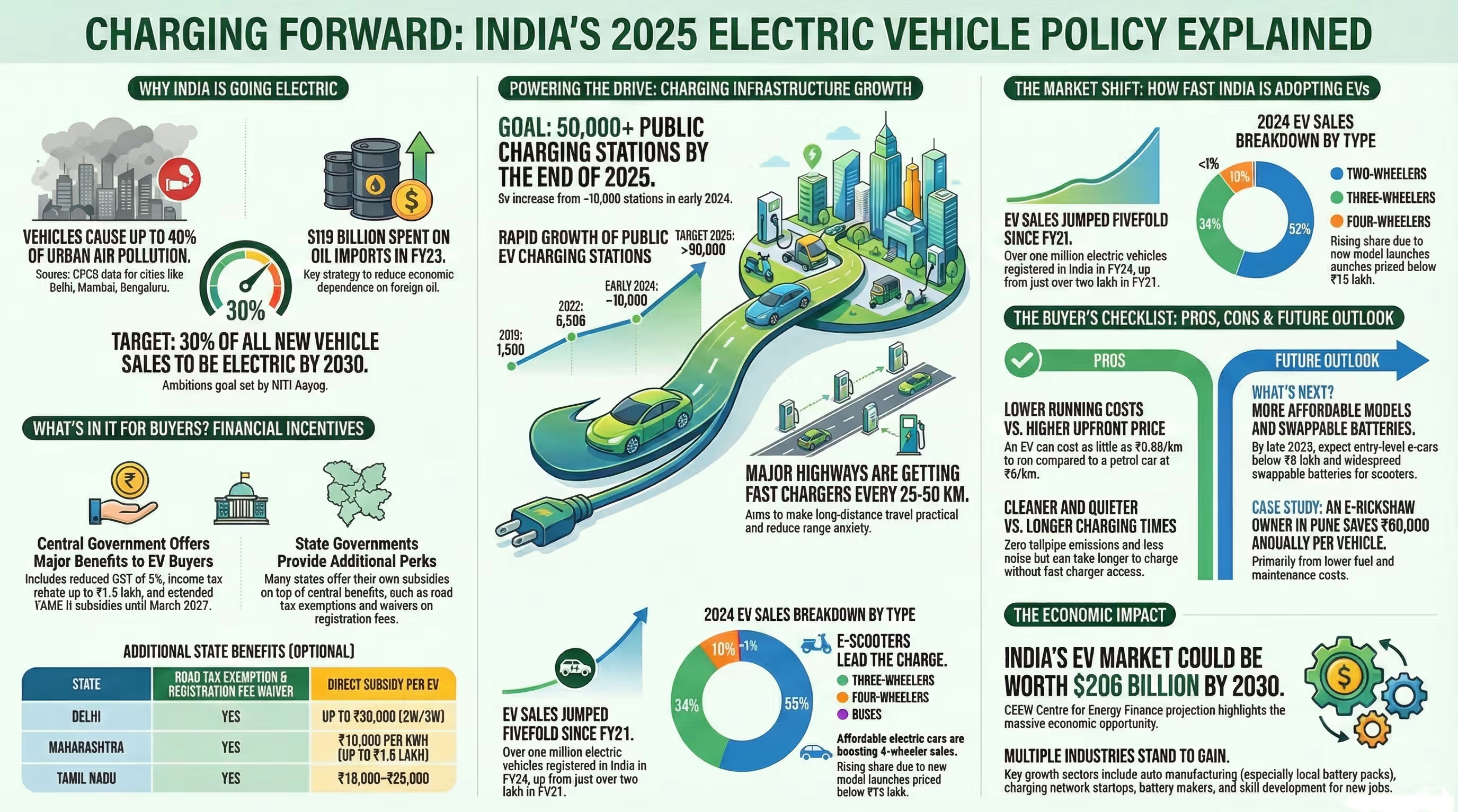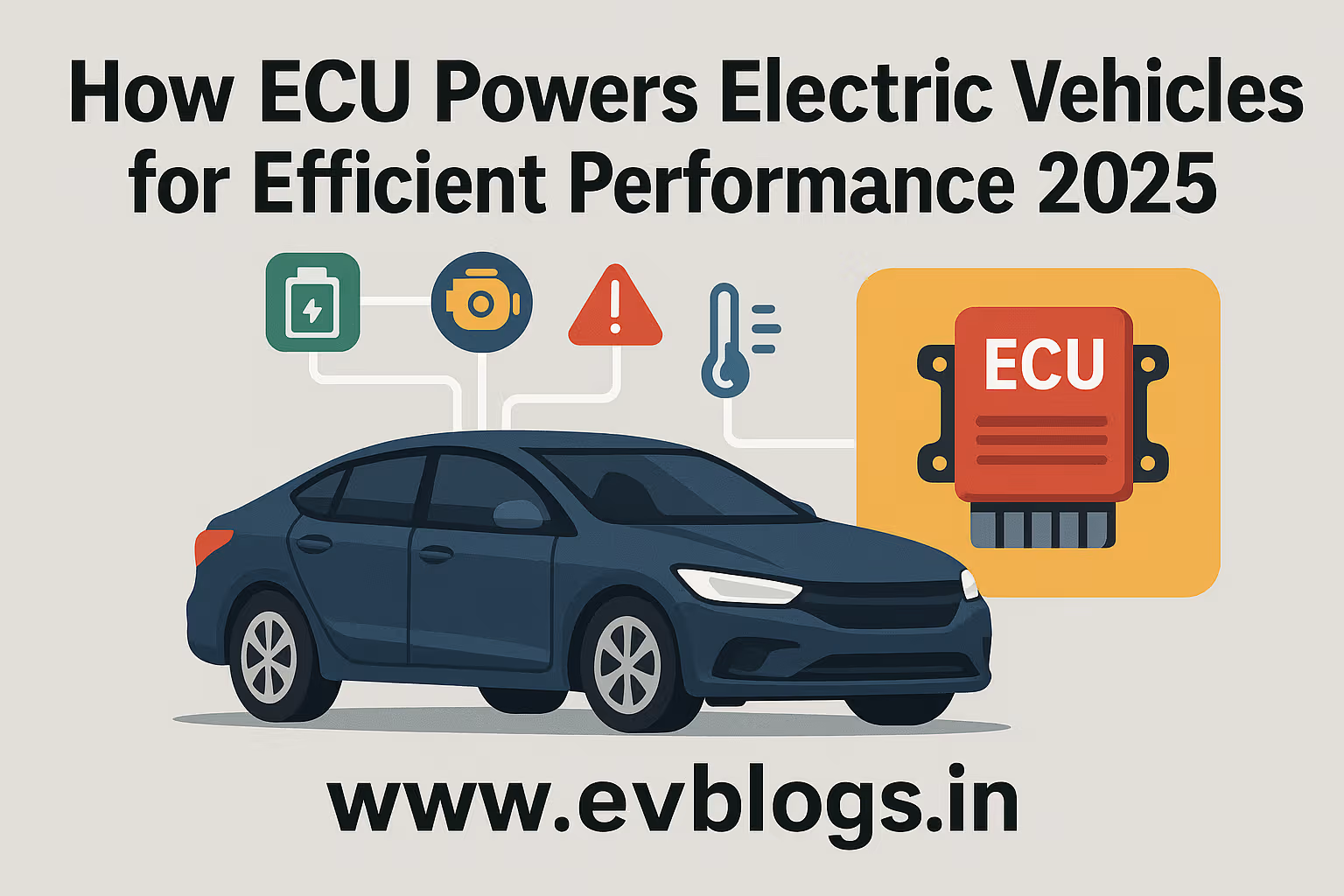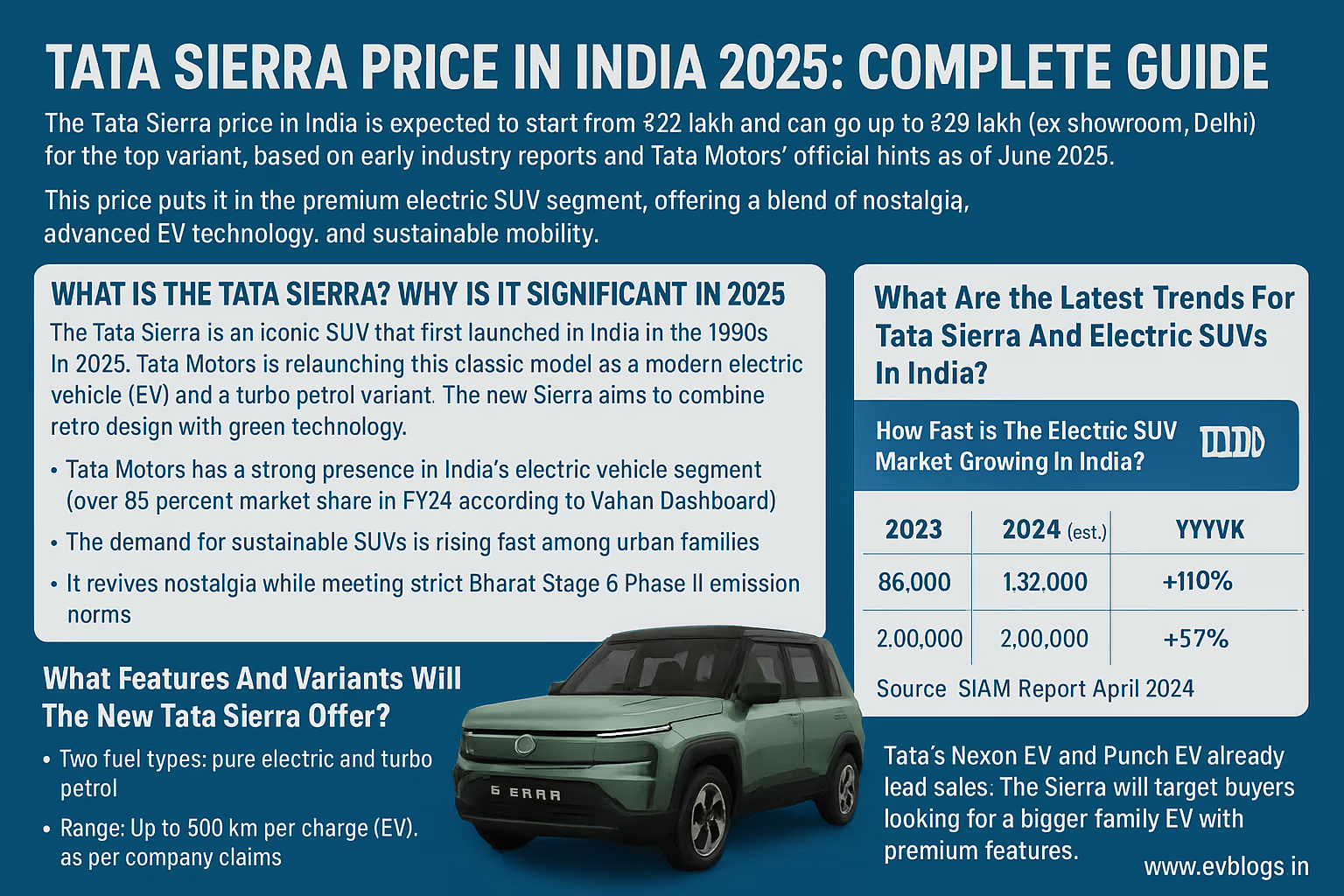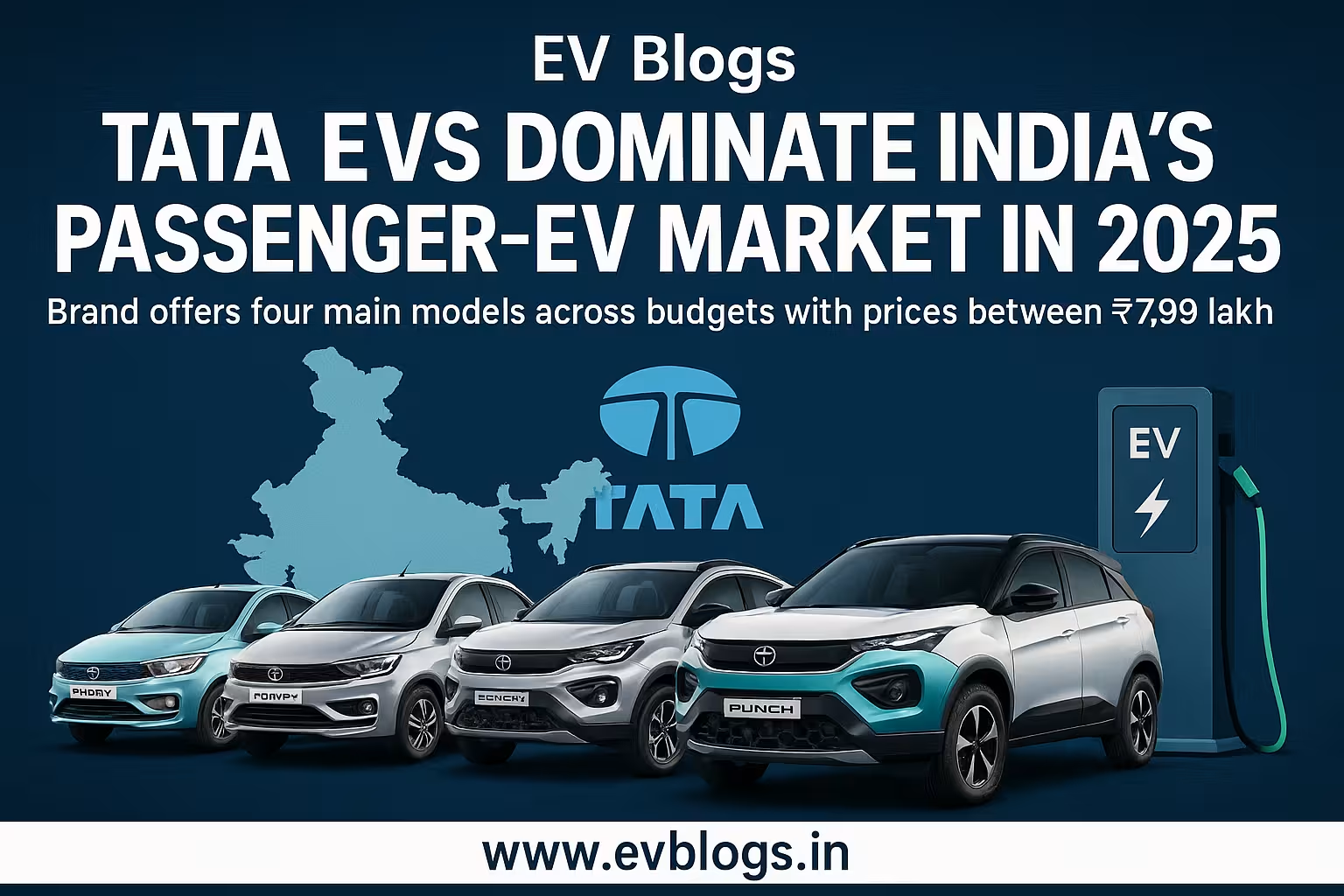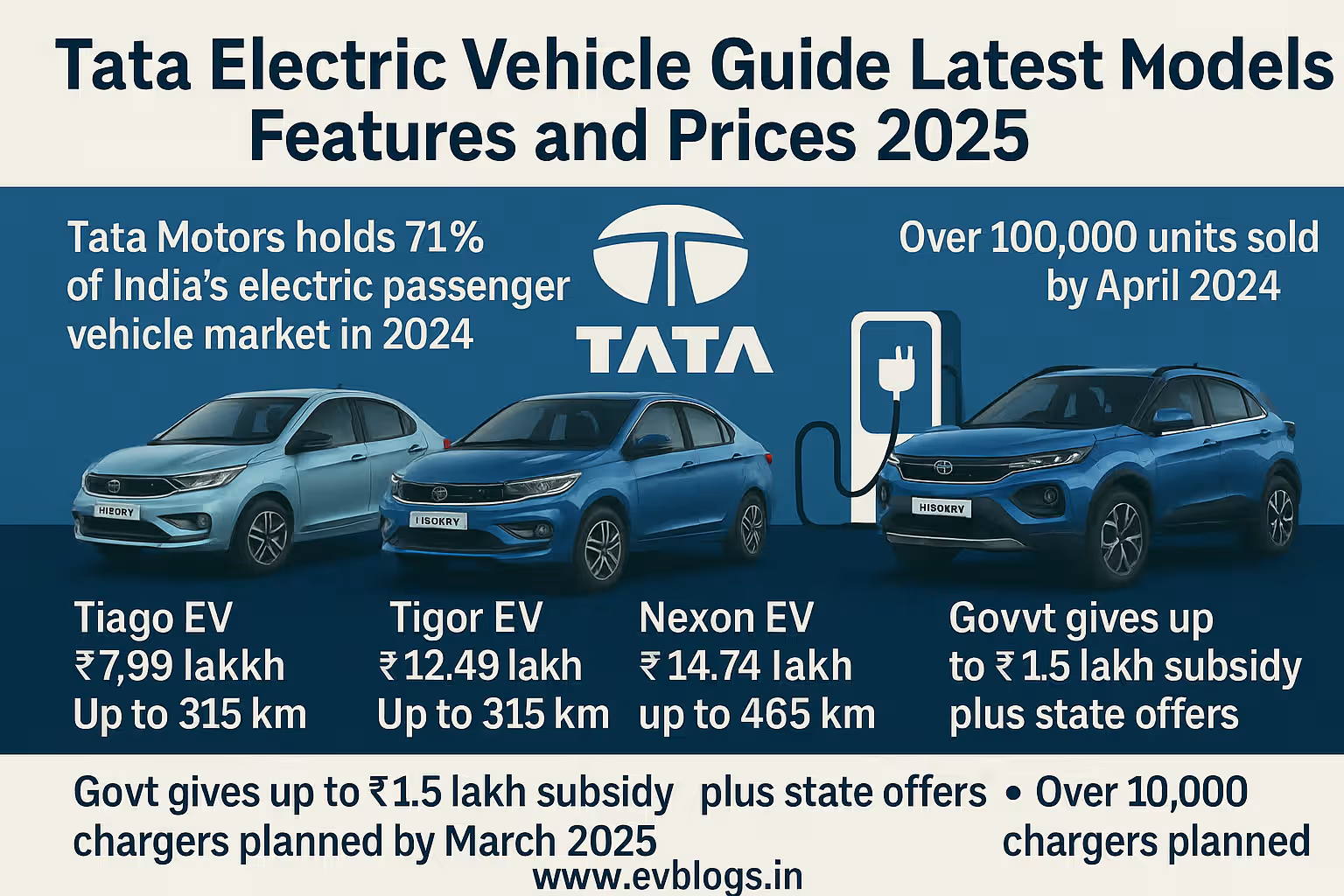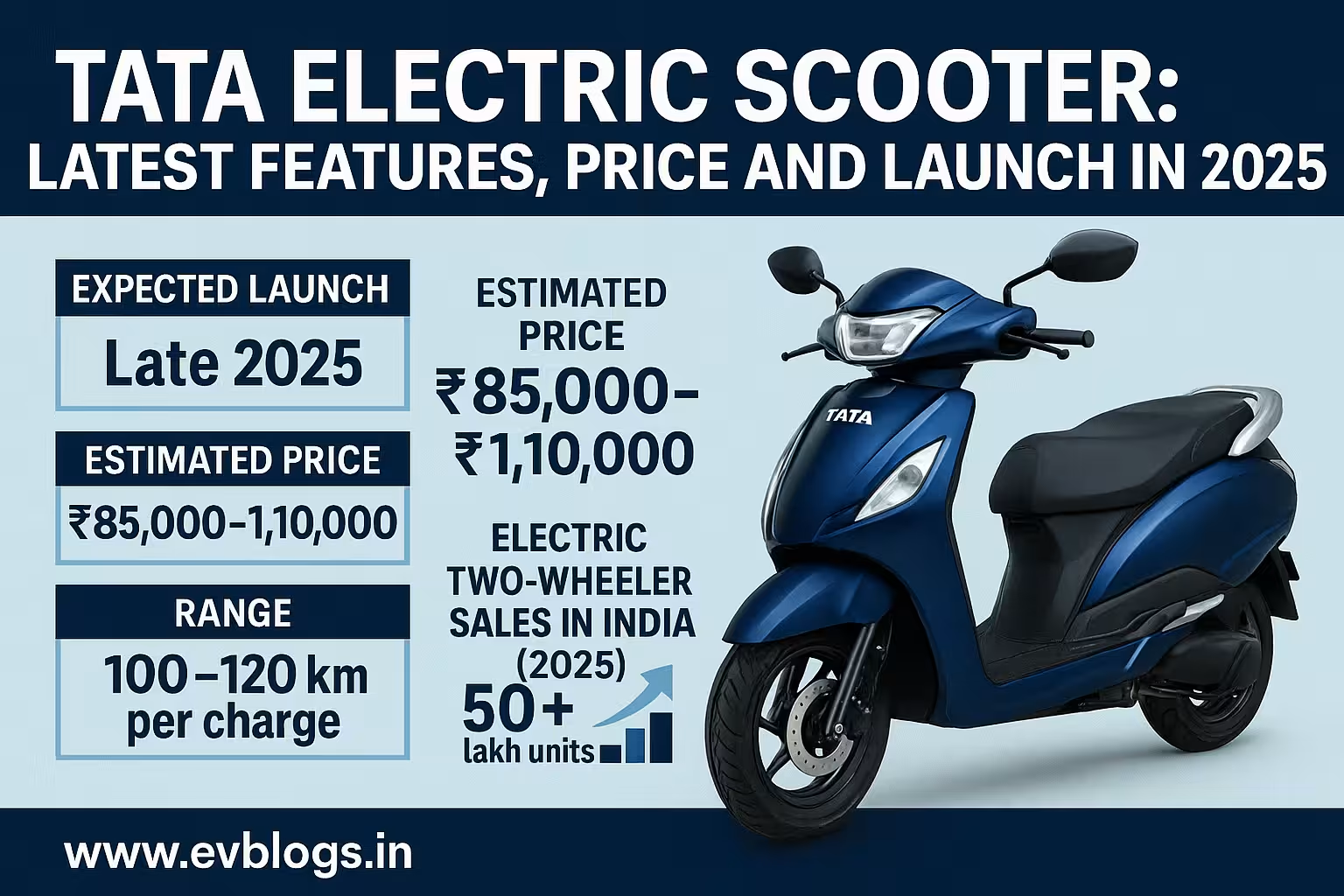Hedhvick Hirav
Hedhvick Hirav is a dedicated EV researcher and editor with over 4 years of experience in India’s growing electric vehicle ecosystem. Their contributions have been recognized in leading sustainability publications and automotive journals.
Summarize & analyze this article with
Choose an AI assistant and open this article directly:
Tip: if the AI doesn’t fetch the page automatically, paste the article URL manually.

Electric Vehicle Subsidy in Dadra and Nagar Haveli and Daman and Diu: 2025 Guide
Introduction: Real-World Relevance of EV Subsidies in Union Territories
India’s rapid push toward electric mobility is not just limited to its metropolitan hubs. Union Territories like Dadra and Nagar Haveli and Daman and Diu (DNHDD) are emerging as vital players in the country’s green revolution. With the central government’s focus on clean energy, these regions are rolling out innovative policies to encourage electric vehicle (EV) adoption among residents, businesses, and fleet operators.
For a region known for its unique blend of industrial activity, tourism, and ecological richness, transitioning to cleaner transport solutions is more than an environmental imperative—it’s a chance to set benchmarks in sustainable growth. However, questions about the actual subsidies available, their eligibility criteria, and real-world benefits remain top concerns for potential EV buyers and stakeholders in DNHDD.
This comprehensive guide unpacks the latest facts about EV subsidies in Dadra and Nagar Haveli and Daman and Diu for 2025, offering practical advice, expert insights, and all you need to make an informed decision.
Understanding EV Subsidies in India: National & Local Context
The National Push for Electric Vehicles
India’s central government has launched several initiatives—most notably the Faster Adoption and Manufacturing of Hybrid & Electric Vehicles (FAME II) scheme—to accelerate EV adoption nationwide. These programs offer direct financial incentives to buyers of electric two-wheelers, three-wheelers, four-wheelers, and commercial vehicles.
Why Focus on Union Territories Like DNHDD?
Union Territories play a pivotal role as laboratories for policy implementation due to their manageable size and administrative structure. Implementing robust EV policies here can serve as a model for larger states. For regions like DNHDD—where air quality is relatively better but at risk from growing industrialization—EV adoption offers both preventive environmental health benefits and economic opportunities.
Key Facts: Electric Vehicle Subsidy Schemes in DNHDD
| Aspect | Details |
|---|---|
| Central Govt FAME II | Applicable in DNHDD for eligible two-, three-, four-wheelers; incentives up to Rs 1.5 lakh |
| State/UT Policy | Adopted UT-level policy aligned with national goals; local top-up subsidies vary |
| Charging Infrastructure | Incentives for setting up public charging stations; land lease support |
| Commercial Fleets | Special benefits for e-rickshaws, e-autos, company fleets |
| Scrappage Benefits | Additional incentives on scrapping old ICE vehicles when buying new EVs |
Note: Specific subsidy amounts may change annually based on policy updates. Always check the latest UT notifications before purchase.
Eligibility Criteria: Who Can Avail the EV Subsidy?
General Eligibility
- Resident Status: Individuals or companies with valid address proof within Dadra & Nagar Haveli or Daman & Diu.
- Vehicle Type: Only new electric vehicles registered in the UT are eligible.
- Model Approval: Vehicle must be listed under approved models by the Department of Heavy Industries (DHI), Government of India.
- Registration: Must be registered with the local Regional Transport Office (RTO).
Special Categories
- Fleet Operators: Higher caps or additional incentives may apply.
- Commercial Vehicles: E-rickshaws/taxis enjoy separate provisions.
- Women/SC/ST Applicants: Some schemes include additional preference or minor relaxations.
What Are the Benefits? A Closer Look at Financial Incentives
Direct Purchase Subsidy
The central FAME II scheme provides:
- Two-Wheelers: Up to Rs 15,000 per kWh of battery capacity (capped as per policy)
- Three-Wheelers: Up to Rs 30,000 per vehicle
- Four-Wheelers: Up to Rs 1.5 lakh per vehicle
- Buses/Commercial Fleets: Varies by category; higher for public transport vehicles
Example Calculation:
If you buy an approved e-scooter with a 2 kWh battery:
Subsidy = Rs 15,000 x 2 = Rs 30,000 off ex-showroom price
State/UT Top-Up Subsidies
DNHDD often aligns its subsidies with central norms but may announce special offers during certain periods or festivals (e.g., Diwali EV drives). These typically range from Rs 5,000–Rs 20,000 depending on vehicle type.
Tax Exemptions & Registration Fee Waivers
Most new EV purchases enjoy:
- Exemption from road tax
- Waiver of registration charges (for first-time registration)
- Lower insurance premiums in some cases
Incentives for Charging Infrastructure
Entrepreneurs or housing societies installing public charging stations may receive:
- Capital cost reimbursement up to a fixed percentage
- Discounted land lease rates
- Priority clearance from municipal authorities
Scrappage Incentives
Trade-in your old petrol/diesel vehicle for an extra rebate when purchasing a new EV—a move designed to accelerate fleet modernization while reducing pollution.
Step-by-Step Process: How To Claim Your EV Subsidy in DNHDD
- Choose an Approved Model
- Check the latest list of FAME II-approved vehicles on official portals.
- Approach an Authorized Dealer
- Ensure your chosen dealership is registered under the subsidy program.
- Book Your Vehicle
- Complete documentation including identity/address proof showing residency in DNHDD.
- Dealer Processes Online Application
- Dealer submits subsidy claim via National Automotive Board/FAME portal at time of billing.
- Instant Price Reduction
- The eligible subsidy amount is deducted upfront from your ex-showroom price—no need for post-purchase claims.
- Vehicle Registration
- Register at your local RTO—road tax and registration fee waivers are automatically applied if applicable.
- Receive Final Invoice
- Ensure that subsidy details are mentioned explicitly on your invoice/bill.
For Commercial Fleets/Charging Stations: Application processes may involve submitting business registration documents and proposals directly to UT transport or industries department.
Expert Insights: Making Sense of Subtle Policy Differences
We spoke with industry insiders and regional policymakers about what sets DNHDD apart:
Dr. Rakesh Mehta, Automotive Policy Analyst:
“Dadra & Nagar Haveli and Daman & Diu have smaller urban centers but high vehicle density relative to population. This makes them ideal pilots for mass EV adoption—the administrative machinery here responds quickly to national directives.”
Priya Desai, Local Green Mobility Advocate:
“Awareness remains a bottleneck here—many residents don’t realize they’re eligible for both central AND local benefits! Dealers must educate buyers better.”
Key Takeaway: Unlike bigger states where policy implementation can get bogged down by red tape, residents here often experience quicker rollouts—provided they know what’s available.
Practical Advice: Tips For Maximizing Your Benefits
- Double Check Model Eligibility
- Not every “electric” model is FAME II approved; verify before purchase.
- Time Purchases Strategically
- Watch out for state festival-time additional rebates or limited-period offers announced by UT authorities.
- Utilize Fleet-Specific Schemes
- If you operate cabs/tourist vehicles/hotel shuttles, ask about special commercial incentives.
- Collaborate on Charging Infrastructure
- Housing societies can pool resources; business parks can negotiate better terms with utility providers.
- Leverage Scrappage Programs
- Trade-in old ICE vehicles wherever possible—scrappage plus purchase rebate maximizes savings.
How Does It Compare? Neighboring States vs DNHDD Subsidies
| Feature | Gujarat | Maharashtra | Goa | DNHDD |
|---|---|---|---|---|
| State Top-Up | Up to Rs 20k (2W), higher | Up to Rs 25k (2W), | Up to Rs 10k (2W) | Typically aligned with FAME II |
| Road Tax Waiver | Yes | Yes | Yes | Yes |
| Charging Infra Support | Strong | Moderate | Growing | Emerging |
| Commercial Fleet Focus | High | Very High | Moderate | Moderate-to-high |
DNHDD offers competitive benefits largely through streamlined access rather than highest cash payouts.
Use-Cases: Who Stands To Gain Most?
Urban Commuters
Daily city riders benefit from reduced running costs plus upfront price drops via subsidy.
Small Businesses & Hoteliers
With tourism picking up post-pandemic, electric cabs/shuttles enhance brand value while saving operational costs.
Industrial Units
Switching internal logistics/factory fleets to e-three wheelers gets both cost savings AND regulatory goodwill.
Residential Societies
Societies that install shared chargers get infrastructure support—boosting property values while serving eco-conscious residents.
FAQs: Common Questions About EV Subsidies in Dadra & Nagar Haveli And Daman & Diu
Q1: Is there a separate state/UT subsidy over FAME II in this region?
A1: There isn’t always a fixed state-level top-up like bigger states offer; however, time-limited additional rebates are sometimes announced during special drives or festivals by local authorities.
Q2: Are commercial vehicles eligible?
A2: Yes—e-rickshaws, taxis, fleet cars registered locally can avail dedicated incentives under both national and regional schemes.
Q3: Can I claim subsidies if I buy my vehicle outside but register it locally?
A3: The vehicle must be purchased through an authorized dealer within India but must be registered within Dadra & Nagar Haveli or Daman & Diu RTOs to qualify.
Q4: How long does it take for subsidy processing?
A4: In almost all cases under FAME II, the subsidy is deducted instantly at point-of-sale—you pay only the net amount after subsidy deduction.
Q5: Are retrofitted/conversion kits eligible?
A5: No; only new factory-fitted models listed under approved categories qualify currently.
Q6: What about used electric vehicles?
A6: Used/pre-owned electric vehicles are not eligible for fresh purchase incentives but may get road tax waivers depending on local norms at time of transfer/registration.
Conclusion: Action Steps & Key Takeaways
Electric mobility isn’t just an idea whose time has come—it’s actively being shaped right now in regions like Dadra & Nagar Haveli and Daman & Diu. Thanks to seamless integration of central schemes like FAME II with responsive local administration:
- Buyers benefit from instant price reductions,
- Fleet owners access targeted commercial incentives,
- Entrepreneurs find support for charging station setups,
- Old ICE owners can maximize savings through scrappage-linked rebates,
…and all this comes with minimal bureaucratic hassle compared to many larger states.
If you live or operate a business in these union territories—and are considering switching to electric mobility—the window of opportunity is wide open through 2025. Stay tuned for periodic announcements from UT authorities regarding extra rebates or infrastructure grants that could further sweeten your transition toward cleaner transport.
For best results:
- Stay informed via official government portals,
- Consult authorized dealers well versed with local policies,
- Time your purchases around festival seasons where possible, and make sure every document matches residency requirements precisely at purchase time.
Sources
- Ministry of Heavy Industries – https://heavyindustries.gov.in
- FAME India Scheme – https://fame2.heavyindustries.gov.in
- Dadra & Nagar Haveli And Daman & Diu Administration – https://dnh.gov.in
- Society of Indian Automobile Manufacturers – https://siam.in
- Various local news reports on recent subsidy drives (2024–2025)


